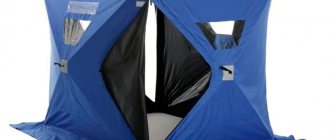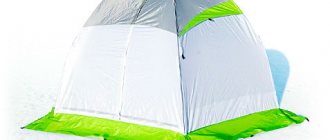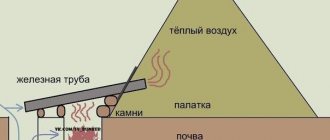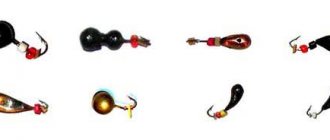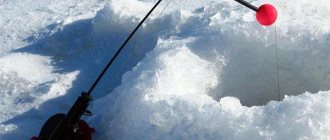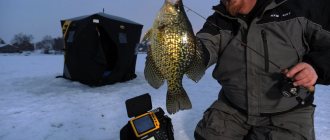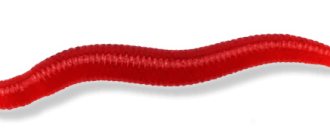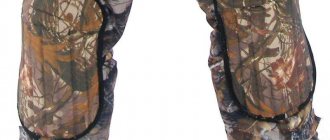Features of choice
You can choose a heat exchanger for a tent in a store; they sell it in departments with camping equipment or in a large fishing supply chain. Before purchasing, it is advisable to first consult with more experienced comrades; experienced fishermen will definitely have more detailed information about this product. If you don’t have such acquaintances, then you should turn to the Internet for help; on forums, fishermen discuss a lot of equipment, and the heat exchanger is no exception.
When purchasing, you should check for instructions for use and carefully inspect all components of the product. Any defect should alert you; if something is wrong, then it is better not to buy such a product.
The most popular are:
- alcohol burners;
- gas heaters;
- gasoline devices.
Victoria Leshchenko
I've been working hard in the fishing tackle department for the past six years. I can help you assemble almost any gear.
Ask a Question
But besides purchased models, there are also homemade ones; there is nothing difficult to make; minimal skills in working with hardware will be quite enough.
Installing a heat exchanger in a tent - safety comes first
The heat exchanger is located on a flat surface on the floor of the tent. It is recommended to place a sheet of metal or plywood under the bottom for greater stability of the device. The chimney is connected at one end to the device, the other is inserted into a special hole in the tent. Combustion products will be removed through it. If this is not done, people in the interior may be poisoned by carbon monoxide.
Next, fuel and/or current sources are connected to the device. After this, the heat exchanger is ready for operation. All that remains is to light the fuel or turn on the power.
Safety
There should be no flammable objects near the unit. On models that operate on gasoline and gas, it is recommended to periodically check the condition of the cylinder for fuel leaks.
You should also pay attention to the tightness of the chimney. If the angler notices that the heat exchanger body is hot, you should immediately turn off the power to the device
Otherwise, an explosion may occur.
Do not leave the device unattended for a long time. Even if there are no visual signs of malfunction, the operation of the device should be carefully checked periodically. Don't neglect this. We are talking about human life.
Types of homemade units
Nowadays, DIYers build various types of heat exchangers, but the following are popular among all:
- on solid fuel, but sometimes this complicates the fishing process itself. You need to be constantly on duty near such a unit, and you also need to have a supply of firewood; getting it at night is problematic.
- A gas heat exchanger is considered more profitable; its use has a large number of advantages, including compactness and greater safety.
The second option is easier to manufacture; almost all components can be purchased and simply connected together with a little modification.
Important production points
Making a heat exchanger for a tent with your own hands from scratch must be built according to the principle of fire tube models. To do this, take a couple of rectangular metal sheets; you need to cut several holes in them for installing heat exchange tubes. There is nothing complicated in this process; for some, welding the tubes to the sheets on both sides will be a problem.
Victoria Leshchenko
I've been working hard in the fishing tackle department for the past six years. I can help you assemble almost any gear.
Ask a Question
It is advisable to place the tubes in a checkerboard pattern in three rows, the top one should have five, the middle one should have four, and the bottom one should have five again.
Next, work is carried out on the following four components; a hole is made in the upper part for the chimney, and the important point will be its quick removal from the product. The cover is welded to the heat exchanger, then the walls are fixed. We can say that the heat exchanger is ready, all that remains is to build the legs. It would be desirable for them to add up, but to each his own.
It is worth understanding that the lower part will not be solid; it is in this part that tubes are installed through which flame and heat penetrate the heat exchanger and warm the air in it.
How to make a heater with your own hands?
In order to make a gas infrared heater for a tent with your own hands, you will need the following materials and tools:
- ceramic infrared heating element;
- gas cylinder;
- burner with tap;
- oxygen hose.
The ceramic heating element must be small in size, because it will be powered by a small cylinder. To begin, unscrew the nozzle from the burner, leaving the tap and tube. The hose is put on the tube and the burner fitting.
The hose must be at least 50 cm long. The cylinder must be in a vertical state, so the fuel will not be liquid, but gaseous. Thus, the tourist receives a powerful portable heating device; a small cylinder is enough for about 2 hours of operation of the heater.
In addition, such a design is safe - the flame appears only at the moment of ignition, after a few minutes the heating element heats up and heat transfer begins.
Electrical work
In order for the heat exchanger to live up to its expectations, it is necessary to equip it with a good fan. A computer cooler is best suited for this; a diameter of 120 mm will be sufficient. They are used for their excellent throughput characteristics and minimal noise.
It is attached to the heat exchanger like this:
- fasteners are screwed to the back of the system;
- then stir the fan;
- The next step is to solder the long wires.
The wiring is connected to the battery and you can start the system and try the heat exchanger. First you need to remove the chimney and install it on the heat exchanger.
Victoria Leshchenko
I've been working hard in the fishing tackle department for the past six years. I can help you assemble almost any gear.
Ask a Question
During the first 10-15 minutes you may feel a burning smell, but then they will dissipate.
Buying a product from a store
This innovation for heating a tent in winter has already been put into mass production. In the retail chain you can find a wide variety of models, some are produced in small limited quantities, small workshops that mainly work to order are thriving.
There are several ways to purchase a heat exchanger:
- through an online store;
- in departments with tourist equipment;
- order directly from the master.
It is advisable to choose a purchasing method where you can look and touch the product, and you should not buy a pig in a poke.
Victoria Leshchenko
I've been working hard in the fishing tackle department for the past six years. I can help you assemble almost any gear.
Ask a Question
Heat exchangers are used not only by fishermen; many tourists have such a unit.
Review of popular heat exchangers
It’s easy to get confused among the many models presented; our tips can become a small guide in this matter. A brief description of the most popular factory models will help you make your choice.
"Sukhovei"
The product has excellent efficiency indicators and works with Hephaestus tiles. The heat exchanger is easy to put into operation and can operate at both low and high speeds. Capacity can reach 184 cubic meters. m/hour, and the noiselessness will please everyone.
"Sibtermo" ST-1.6
The weight of the product is less than two kilos, and its performance is an order of magnitude higher than the previous one. This is due to the presence of two fans, due to which the throughput increases significantly. Powered by gas and infrared burners. A special feature is that in a short period of time the product heats large volumes of air even in severe frosts.
"Desna" BM
The manufacturer of this heat exchanger assures of very high efficiency, which is not comparable to other models. There is only one fan, but the product can operate both autonomously and in turbo mode. The durable stainless steel case is coated with enamel, which allows it to withstand even very high temperatures.
Whether to buy a heat exchanger for winter fishing in a tent or to make it yourself is up to everyone to decide, but with this product, fishing will definitely become more comfortable. The heat exchanger will warm the fisherman even in severe frost and wind, and the tent will protect from other weather troubles.
Review of the best models
On the modern market you can find a wide selection of heat exchanger models. Before you go shopping, you should check out the best ones.
Gas heat exchanger SIBTERMO ST-4.5 from Omsk manufacturer
The body is made of aluminum alloys, which have good thermal conductivity. Covered with heat-resistant paint. It is capable of heating not only a tent, but also a small living space. The unloaded weight of the device is 7.4 kg. It operates on gas. Price 16,500 rub.
Review of the Sibtermo heat exchanger:
Watch this video on YouTube
Sukhovey
The external casing of the Sukhovey heat exchanger is made of stainless steel. Inside there are aluminum tubes, which ensure good heat transfer. The basic package includes a fan, the power of which can be adjusted using a dimmer. The outlet pipe is located at the bottom of the housing. This greatly increases the efficiency of the device. The weight of the device is only 2.9 kg. Price 9,500 rub.
Electric battery heat exchanger Desna BM
The device can operate in automatic and turbo modes. Power is supplied from a battery or batteries.
It is noted that the efficiency of this device is slightly higher than that of similar devices. It heats the air quickly. Products made of flammable materials must not be placed near the device. The heat exchanger body quickly heats up to a high temperature. Price 11,000 rub.
Bullfinch
The device body is made of stainless steel with a thickness of 1.5 mm. Covered with heat-resistant paint. The device is designed for operation at extremely low temperatures. Equipped with folding legs. The basic package includes a carrying container, which can also be used as a table. Price 4,700 rub.
Ripus
Made from steel alloy coated with anti-corrosion protection. Compact dimensions make it possible to install it even in small tents, and low fuel consumption increases operating time. Hazardous combustion products are quickly removed through the chimney. Price 3,150 rub.
How to choose a heat exchanger for a tent - video review:
Watch this video on YouTube
